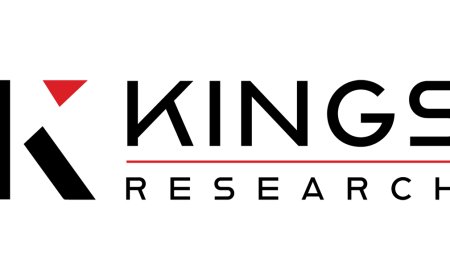AI Inference Market: Driven by Surging Generative AI and Large Language Model Adoption
A new market analysis highlights the significant and rapid expansion anticipated in the global AI Inference Market. Valued at USD 98.32 billion in 2024, the market is projected to grow from USD 116.30 billion in 2025 to a substantial USD 378.37 billion by 2032, exhibiting a remarkable Compound Annual Growth Rate (CAGR) of 18.34% during the forecast period. This robust growth is propelled primarily by the rapid proliferation of generative AI applications across diverse industries, alongside the increasing demand for real-time AI processing at the edge and in the cloud, to enable faster decision-making and enhance operational efficiency across various sectors.
Read Complete Report Details: https://www.kingsresearch.com/ai-inference-market-2535
Report Highlights
The comprehensive report analyzes the global AI Inference Market, segmenting it by Compute (GPU, CPU, FPGA, NPU, Others), by Memory (DDR, HBM), by Deployment (Cloud, On-premise, Edge), by Application, by End User, and Regional Analysis.
Key Market Drivers
-
Rapid Proliferation of Generative AI Applications: The explosive growth of generative AI models, such as large language models (LLMs) for text generation, diffusion models for image creation, and AI for code generation, is a primary driver. These applications require immense computational power for inference (using trained models to generate outputs), driving demand for specialized hardware and optimized software solutions.
-
Increasing Demand for Real-time AI Processing: Industries like autonomous vehicles, healthcare (diagnostics), finance (fraud detection), and manufacturing (predictive maintenance) increasingly rely on real-time AI processing for immediate decision-making and action. This necessitates low-latency and high-throughput inference capabilities.
-
Growth of Edge AI and IoT Devices: The proliferation of IoT devices and the shift towards processing AI workloads closer to the data source (edge computing) are significant drivers. Edge AI inference reduces latency, enhances data privacy, and enables AI applications in environments with limited cloud connectivity, ranging from smart homes to industrial automation.
-
Advancements in AI Hardware and Chip Architectures: Continuous innovation in AI-specific hardware, including Graphics Processing Units (GPUs), Neural Processing Units (NPUs), and Field-Programmable Gate Arrays (FPGAs) optimized for inference tasks, is providing more efficient and powerful solutions to handle complex AI models.
-
Rising Adoption of AI Across Diverse Industries: Enterprises across IT & telecommunications, healthcare, automotive, retail, and manufacturing are increasingly integrating AI into their operations to enhance productivity, automate processes, and derive actionable insights from data, driving the need for robust inference infrastructure.
Key Market Trends
-
GPU Dominance in Compute: "Graphics Processing Units (GPUs)" continue to dominate the compute segment due to their superior parallel processing capabilities, which are highly efficient for running complex deep learning models and handling the parallelizable workloads of AI inference.
-
NPU's Rapid Emergence: "Neural Processing Units (NPUs)" are rapidly gaining traction as a specialized compute type. Designed specifically for AI workloads like matrix and tensor operations, NPUs offer high efficiency and performance for inference tasks, particularly at the edge.
-
HBM Leading in Memory: "High Bandwidth Memory (HBM)" is the leading memory type in the AI inference market. HBM offers significantly faster data transfer speeds compared to traditional memory (DDR), which is crucial for efficiently handling the large AI workloads and complex neural network computations required for inference.
-
Cloud Deployment Maintains Lead: "Cloud" deployment models hold the largest market share due to their scalability, flexibility, and the ease of access to powerful AI inference resources provided by hyperscalers. This allows businesses to scale their AI operations up or down based on demand without significant upfront infrastructure investments.
-
Edge Deployment's Fast Growth: "Edge" deployment is projected to be the fastest-growing segment. The demand for real-time processing, reduced latency, improved data privacy, and the proliferation of IoT devices are driving AI inference closer to where data is generated.
-
Generative AI as the Fastest-Growing Application: "Generative AI" is the most rapidly expanding application segment within the AI inference market. The widespread adoption of LLMs for content creation, chatbots, and advanced virtual assistants is generating massive inference workloads.
-
Focus on Energy Efficiency and Optimization: With the increasing energy demands of AI inference, there is a strong trend towards developing more energy-efficient hardware and optimizing models (e.g., through quantization and pruning) to reduce computational costs and environmental impact, particularly for continuous operations.
-
Integration with IoT and Real-World Data: AI inference is becoming increasingly integrated with IoT devices to analyze vast amounts of sensor data locally and make immediate decisions. This also involves leveraging real-world data (RWD) for continuous model improvement and more accurate inferences.
-
North America Dominance, Asia-Pacific Rapid Growth: North America continues to hold the largest market share in the AI inference market, driven by early and widespread adoption of AI across various industries, significant investments in AI research and development, and the presence of major technology companies. Asia-Pacific is projected to be the fastest-growing region, fueled by rapid digital transformation, increasing AI adoption across diverse sectors, and government initiatives promoting AI development and infrastructure in countries like China, Japan, and South Korea.
The global AI Inference Market is undergoing an unprecedented period of expansion, propelled by the transformative capabilities of generative AI and the pervasive need for intelligent, real-time decision-making across all facets of modern industry and society.



































